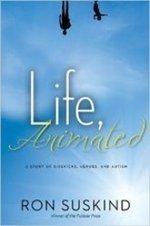 Strategies for Use in Your Classroom
Strategies for Use in Your Classroom
by Christine Sproat MA, OTR/L & Allison Martin MS, OTR/L
Alerting and Arousing Activities
Alerting and Arousing Activities are to be used for children who seek out sensory input or are oblivious to sensory experiences in their environment. They often need to be bombarded with sensory input to actually feel something. Providing select activities with more intense sensory experiences that are consistent with the child’s sensory needs fosters socially acceptable behaviors. Participation can occur with fewer interruptions from sensory seeking or under responsive (oblivious) behavior.
- Loud, fast paced, rhythmic music.
- Bright Lighting.
- Spinning (in place, sit and spin, office chair, merry go round or tire swing). Allow for about 15 revolutions in one direction, take a few seconds and then spin the other direction. (It is very important to monitor spinning activities and ask child's permission before spinning).
- Jumping up and down (use jogging trampoline or mattress).
- Walking on uneven surfaces to get to and from places in the classroom by using cushions or even a long inflatable raft on the floor to walk over. Outside encourage walking on grass, sand or a ‘clatter bridge’ on the playground.
- Taking frequent breaks during more difficult tasks that require sustained attention (marching, hopping, skipping, jumping and running in place).
- Encouraging an active recess playtime with swinging, running, sliding and climbing.
- Making a swing in your classroom by using a blanket and have 2 adults hold the corners and swing back and forth as well as bounce up and down.
- Bouncing on a therapy ball or sitting on a ball chair while doing schoolwork.
- Crunching on popcorn, pretzels, carrots, apples or ice chips.
- Jumping and crashing into pillows, comforters or mats or jumping safely off of playground equipment.
- Playing with messy textures, like snow paint (shaving cream and glue), gak (borax, glue and water), cornstarch and water, cooked noodles, and finger paint using hands and feet.
- Playing games blindfolded, such as: can you feel it-hide small squishy bugs in bean box and have kids find them or show them a car, coin or toy and ask them to find the one that matches in the bean box.
- Sliding down the slides on the playground. Encouraging different positions like lying down, front forwards, backwards (with supervision).
- Riding toys give great linear movement and can be used for indoor gym or outdoor recess (tricycles, scooters, bikes like the ‘Skoot’).
- Dance-Freeze to music.
- Adult affect (tone of voice, facial expression) is high, happy, moving faster, a lot of praise, higher voice that is sing-songy “Oh Wow Ben!! You really are a good jumper!”.
- Labeling movement to encourage movement “You are bouncing!”.
- Hanging by arms from monkey bars with supervision then dropping to ground with supervision.
- Games like tug of war, or hot potato with weighted ball.
- A cool classroom is alerting.
- Providing activities to increase intensity, frequency, or duration of sensory experiences.
- Providing appropriate channels for needed activity and intensifying sensory aspects of task and context, such as: Alternate active and passive activities in schedule.
- Providing socially appropriate outlets for sensory needs, such as helping to run errands, collecting art supplies, moving chairs and desks, and helping to clean tables.
- Planning activities that require more sequencing after recess or physical education classes so that movement will stimulate the thinking centers of the brain.
 Strategies for Use in Your Classroom
Strategies for Use in Your Classroom

